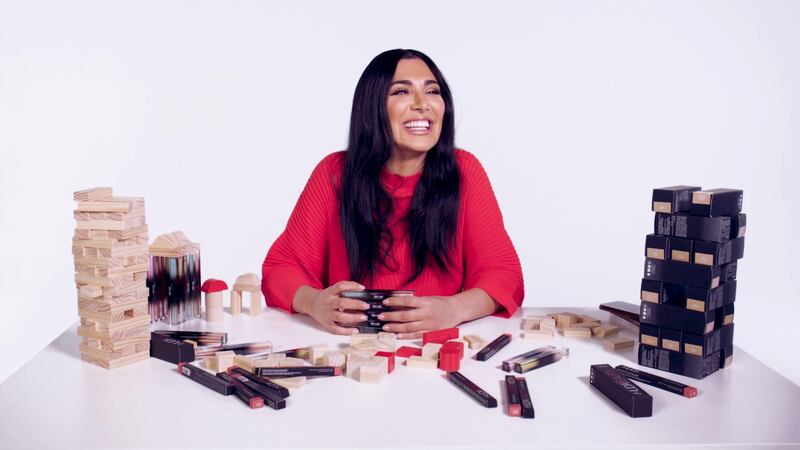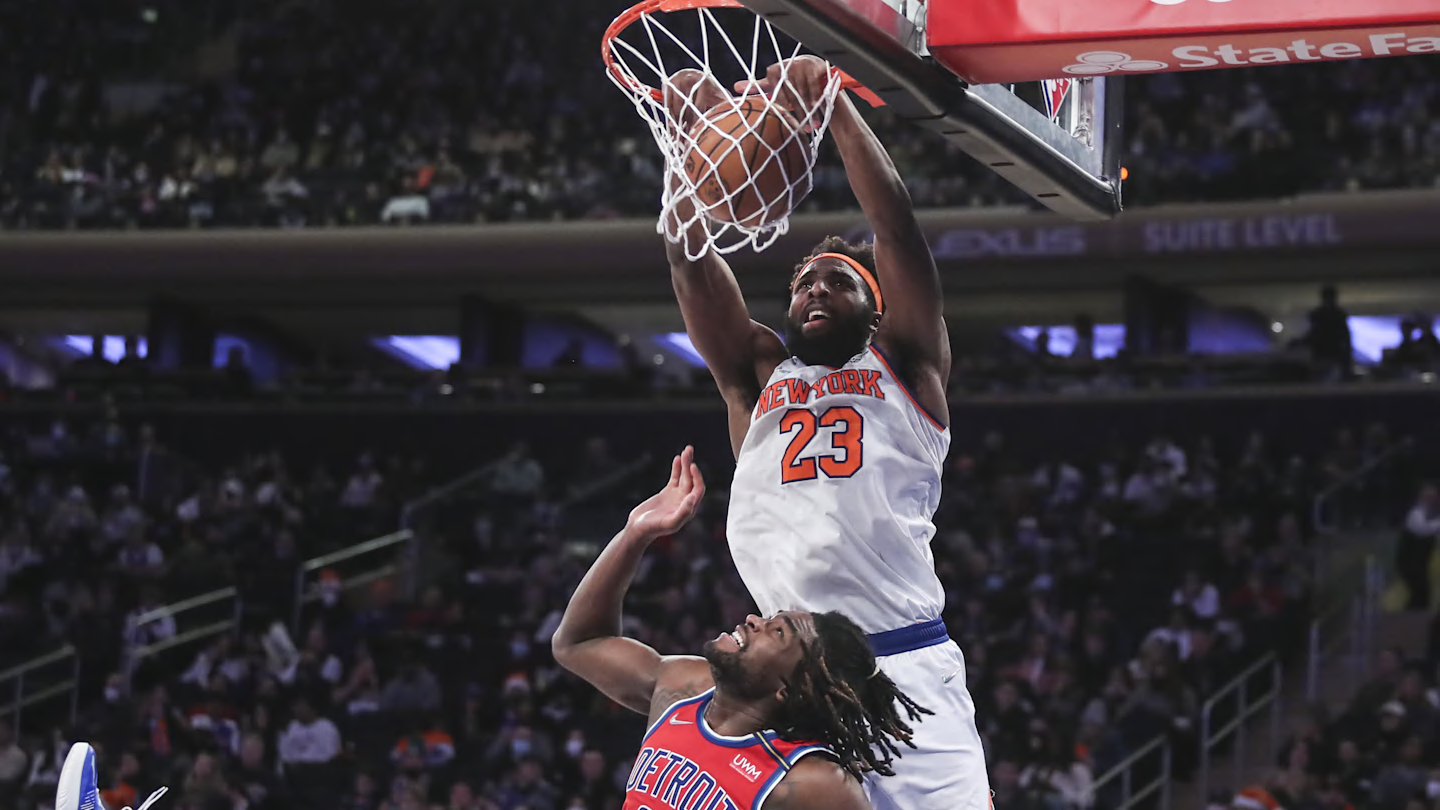Fashion
New York Fashion Week Isn’t Dead

The death of New York Fashion Week has long been lamented, but the events of last week appear to be proof of life.
Sure, there are still problems. Homegrown talents like Peter Do, The Row and, most recently, Gabriela Hearst have decamped to Paris. Former mainstays like Oscar de la Renta and Marc Jacobs now show off-calendar. Shows in hard-to-access locations on the far west side of Manhattan and in the Brooklyn Navy Yard have made programming into something of a week-long schlep.
These challenges were crystalised in a joint report by McKinsey and the nonprofit Partnership for New York City, published on the first day of fashion week this season. It points to a “deflation of NYFW on the world stage” due to the decentralisation of venues, the prohibitive costs of putting on a runway show and an overall lack of engagement with the city itself.
Over the past week, however, New York Fashion Week has proven its critics wrong. The big moments this season felt more grand than before — just look at Ralph Lauren’s equestrian showcase in Bridgehampton, which included a one-night-only recreation of his famed Polo Bar restaurant, or the surprise performance by Wu-Tang Clan, brought together by Tommy Hilfiger on a decommissioned Staten Island ferry.
Marquee shows from Alaïa and Off-White, both of which typically show in Paris, as well as the arrival of Swedish minimalist favourite Toteme, signalled the strength and desirability of the American market. Domestic talent, in the form of a small but influential cohort of indie brands, exhibited their aesthetic worlds in their own idiosyncratic ways, whether that’s through Eckhaus Latta’s rambunctious dinner party or Willy Chavarria’s runway ode to democracy. New York mainstays put their commercial success on display — Coach sent a wide range of bags down the runway, from oversized backpacks to top-handle satchels covered in doodles, and Tory Burch brought back its Reva flat, a style that catapulted the brand to success in the late aughts.
Beyond the runway, the energy percolated across the city in the form of events and activations, engaging other segments of the fashion industry. Florentine retailer LuisaViaRoma opened its first international outpost with a splashy party on Sept. 4. The next day, J.Crew recreated the iconic New York restaurant La Côte Basque in the basement of the New York Public Library. Thom Browne, Kering and Loewe with Saks also hosted dinners throughout the week, each just as star-studded as the last. Rival influencer monetisation companies ShopMy and LTK both hosted events, the latter for the first time since before the pandemic.
If anything, this New York Fashion Week flaunted its hometown and brought back an excitement that hadn’t been felt in years. The perfect early autumn weather didn’t hurt either.
“People were just really excited and having fun last week,” said fashion writer Rachel Tashjian. “It felt convivial, rather than like a grind.”
Behind-the-scenes, there were critical logistical improvements. In response to growing complaints about the difficulty of getting between shows, the Council of Fashion Designers of America teamed up with Google this season to charter a bus that took attendees from show to show. It was overall a big hit, even with the traffic. And more so than in past seasons, shows tended to run on time (or at least, within 30 minutes of their supposed start time), with few exceptions.
To be sure, it wasn’t a perfect week. The sheer star-power — Alaïa was one of the few shows to start late because it was holding the runway for Rihanna to arrive — or production value of the events often overshadowed the clothes themselves.

And in this iteration of NYFW, it seemed that a big name or a big budget was the surest ticket to success, which posed challenges for small brands trying to break through the noise.
“New York Fashion Week has been known as a place to discover new brands, and some of that discovery aspect is now gone,” said Gary Wassner, founder of financing firm Hilldun Corp.
And though many attendees were grateful not to have to make the trek to the Starrett-Lehigh building, or brave Spring Studio’s elevator lines, some emerging designers missed those hubs, which were operated by IMG. Knitwear designer Nia Thomas said showing as part of Black in Fashion Council’s showroom last season at Starrett-Lehigh changed the trajectory of her business.

“Editors who didn’t know us came and discovered. They started pulling samples immediately, my DMs were blowing up in the weeks after from stylists,” said Thomas. “That type of exposure is massive and you can’t put a price on it.” This season, Thomas was not invited back by the Black in Fashion Council. After having trouble securing a workable location and sponsors, she opted to bow out presenting entirely.
As it gets more expensive and logistically difficult to stage shows, brands must think harder about whether they really need one. A runway show isn’t always the best format every season for small brands and sometimes even larger ones. A number of brands favoured small gatherings rather than traditional shows this season, for instance. Todd Snyder invited about 50 people to his runway inside Le Rock restaurant; Eckhaus Latta coordinated with its guests to walk the “runway” at a dinner event in a loft in Tribeca.
The intimacy of these events also underscored the closeness of the fashion community in New York City — another reason why this season felt reinvigorated, insiders said.
Eckhaus Latta’s dinner was a great example of a brand demonstrating its cultural prowess, said Tashjian. “They’re saying, ‘We’ve really built something that’s not just an aesthetic but a sensibility and a group of very dedicated customers,’” she added.
THE NEWS IN BRIEF
FASHION BUSINESS AND THE ECONOMY

Chanel owners and L’Oréal heir investing in Olsens’ The Row. The Wertheimer family and Francoise Bettencourt Meyers’ Tethys Invest have acquired minority stakes in the brand, valuing it at approximately $1 billion, with Imaginary Ventures also joining the investment. The Mary-Kate and Ashley Olsen sisters will remain The Row’s majority shareholders.
Richemont chairman says luxury watchmakers must cut production. Johann Rupert told shareholders at the Swiss conglomerate’s annual general meeting that global demand for watches “has gone past the boom,” held back by subdued sales in mainland China and Hong Kong.
Nike shareholders voted against the proposal on workers’ rights. The proposal would have involved binding agreements with supply chain workers to better address human rights issues. Last year, more than 60 investors urged Nike to pay $2.2 million in allegedly unpaid wages to some 4,000 garment workers in Cambodia and Thailand.
Valentino to scale back runway calendar. Under new designer Alessandro Michele, the Roman brand will stop staging separate men’s and women’s ready-to-wear shows in favour of combined coed outings, and show couture only once per year.
Kering stock slumps to 2017 low on China demands fears. Shares fell as much as 4.3 percent on Monday, the most in about seven weeks, as analysts at Barclays Plc cut their recommendation on the stock to underweight from ‘equalweight,’ similar to a hold rating. Barclays sees a risk of Gucci still being in negative territory next year.
Hodakova takes home top honours at the 2024 LVMH Prize. The Stockholm-based label founded by Ellen Hodakova Larsson won top honours for creating both desirable silhouettes and a viable business model for an upcycling brand. Larsson will receive €400,000 and a year of mentorship from LVMH executives.
S.S. Daley wins Queen Elizabeth II award for British design. Steven Stokey-Daley received the award from the British Fashion Council that recognises budding designers who engage in sustainable practices or community engagement.
LVMH nears F1 sponsorship deal across its brands. The conglomerate is nearing an agreement for Tag Heuer and other brands to be sponsors of F1 brand logos and products displayed prominently to race viewers. The potential agreement could be worth a reported $150 million annually.
Victoria’s Secret relaunches activewear line VSX. Victoria’s Secret first entered the category more than a decade ago, but has shifted its focus elsewhere in recent years. At its peak, activewear generated $500 million in sales for the retailer. This expansion is part of a broader strategy to diversify and elevate its product offerings.
Under Armour expects bigger charges in restructuring plan. The athletic-wear brand said it decided to close a distribution centre, which will add about $70 million in extra expenses. Under Armour now expects operating loss in the fiscal year to be as much as $240 million, compared with the previous view of as much as $214 million.
Zara-owner Inditex extends sales gains. The company’s sales surged 11 percent at the start of the third quarter, outpacing rivals and boosting shares. Operating profit in the first half also came in higher than expected, rising 12 percent to €3.6 billion ($4 billion), the retailer said.
Mazarine Group acquires event producer Arter. In its sale to Mazarine Group, Arter joins stablemates including communications agency Mazarine, fashion show producer La Mode en Images, Numéro magazine and Reiffers Art Initiatives.
THE BUSINESS OF BEAUTY

Huda Beauty weighs sale of fragrance division. The company is considering selling its Kayali perfume division, with Goldman Sachs advising. The deal would potentially allow the brands to operate independently and enable the buyout of TSG Consumer Partners’ stake.
L Catterton acquires Latvian bath and body brand Stenders. The private equity firm will help the brand accelerate its expansion in Asia, Europe, the Middle East and the US. Stenders’ revenue has risen by about 20 percent annually over the past four years, according to the statement.
Net-a-Porter shifts beauty to affiliate model. Under the new format, the Richemont-owned luxury e-tailer will no longer stock beauty products. Instead, products will be listed on the site through editorial content that will link to brands’ sites to purchase.
Chanel named Margot Ribbie as the face of Chanel No. 5. The actress has been an ambassador for the house since 2018, and has previously starred in beauty campaigns for products such as the Nuit Blanche lipstick line. Robbie takes over from the French actress Marion Cotillard, who had been the perfume’s ambassador since 2020.
Glossier names a new class of grantees. The latest recipients of Glossier’s Grant Programme, which awards $50,000 and mentorship to Black-founded brands, include Tonal Cosmetics, The UnBraider, The Renatural, and Rose Ingleton MD. Alicia Scott, founder of Range Beauty, won the Alumni Award, which gives a former grantee $100,000 in funding.
PEOPLE

Disgraced fashion executive Nygard gets 11-year prison sentence for sexual assault. Peter Nygard received a sentence of 3.5 years on one of the convictions and 2.5 years on each of the other three charges. Prosecutors had been seeking a total of 15 years. The judge said Nygard used his wealth and power to prey on women.
Chanel appoints Simona Cattaneo as fragrance and beauty president. Cattaneo succeeds Anne Kirby, who had been with the luxury French fashion house for 35 years in various functions, including as fragrance and beauty president since 2018. Cattaneo joins from Tod’s, where she was appointed general manager in 2021.
Sephora North America appoints new chief financial officer. Delphine Herve, who joined Sephora in 2014 and is currently the beauty retailer’s senior vice president, finance and analysis, is set to move into the position in April 2025.










